In 1866, John Florence Purdon Macarthy recalled that Castleisland’s Market House was once the home of Rev Crosbie, who long resided in apartments there until he removed to the Glebe House at Kilbannivane, Castleisland.1
Rev William Crosbie, otherwise Lord Brandon, served the parish of Castleisland from 1796-1832 during which time – 1818 – the Glebe House was constructed. In 1819, however, he was leasing it to a Mr Chute.2
The following year, Lord Brandon appears to have been in residence, revealed in a case of slander taken against him by solicitor David Fitzgerald of Grouse-hall, near Scartaglin.3
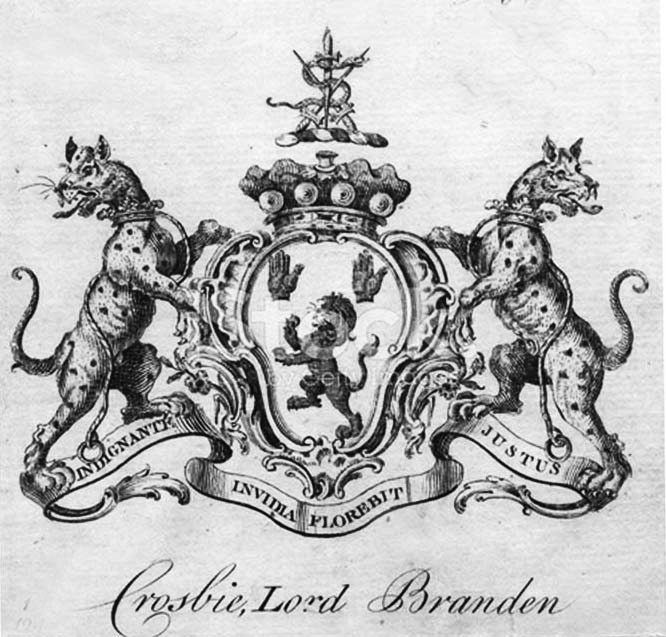
Later, Rev James Mahon, Lord Brandon’s curate, was in occupation. Rev Mahon, born in Co Clare c1772, was the son of William Mahon and uncle of ‘The O’Gorman’, MP for Clare in 1830.4
During Rev Mahon’s tenure, he established a boarding school for the sons of the gentry in the former Charter School where he ‘walled and planted the place by county presentments at the public cost’.5 Rev Mahon married Penelope, daughter of William Townsend Gun and his wife Sarah, eldest daughter of Anthony Stoughton Esq of Ballyhorgan, Co Kerry.6
The couple had two sons, Anthony Stoughton (or Staughton) Mahon and William Gunn Mahon.7 Rev Mahon died at Castleisland Glebe House on 26 December 1826.
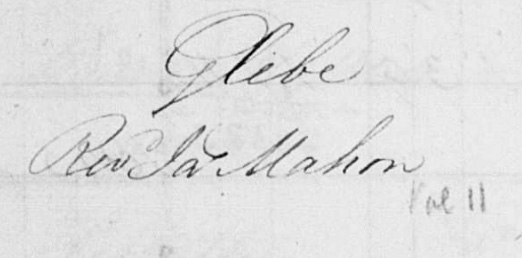
The following description recalls the splendour of the property:
A lovely old Georgian house in a secluded woodland setting, a short distance from the ancient cemetery of old Kilbannivane. Entrance is through a porch, leading to the main staircase hall and a number of reception rooms. In the study were housed the parish records. The domestic quarters were three steps down and consisted of a pantry, kitchen and dairy room. Upstairs consisted of the Blue Room and the Gold Room for visitors and the master bedroom for the rector and his wife. A corridor led to two more bedrooms, a dressing room and large bathroom. Magnificent marble fireplaces and beautiful rugs were featured throughout the house and the splendid timber staircase was a most impressive sight. All the reception rooms and the staircase hall have beautiful, high plasterwork ceilings.8
In the years that followed, parish rectors included reverends Arthur Herbert, Francis Richard Maunsell, Denis Moriarty, William Lindsell Shade, Robert Philip Rowan, George Browne, Frederick Alexander Howard White, Charles Whittaker Griffin, Francis Vincent Quartus Kerr and Henry Joseph Packham, each contributing to the history of Castleisland parish.9
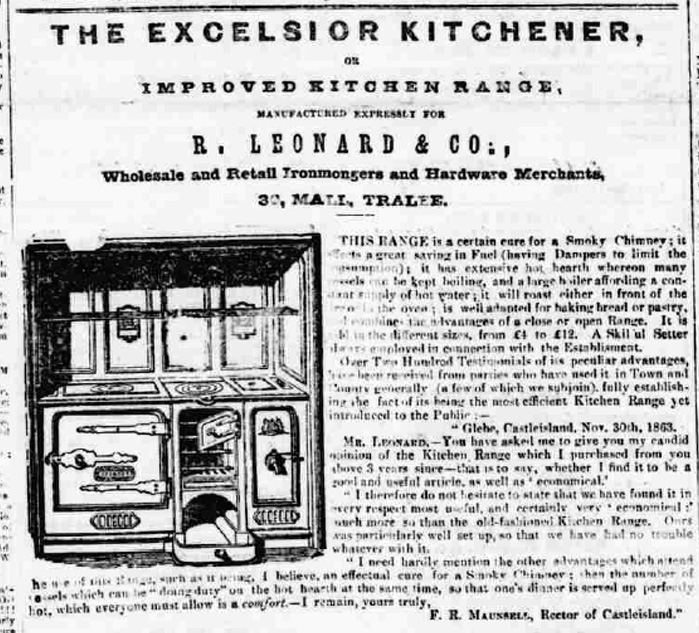
Many sons of clergymen fought in the first and second world wars. The popular Rev Denis Moriarty, who ministered in Castleisland from 1875 to 1901, lost a grandson, Major Eric Denis Corkery, in 1942.10
Rev Henry Joseph Packham was the last to occupy the rectory which he vacated in 1947.11
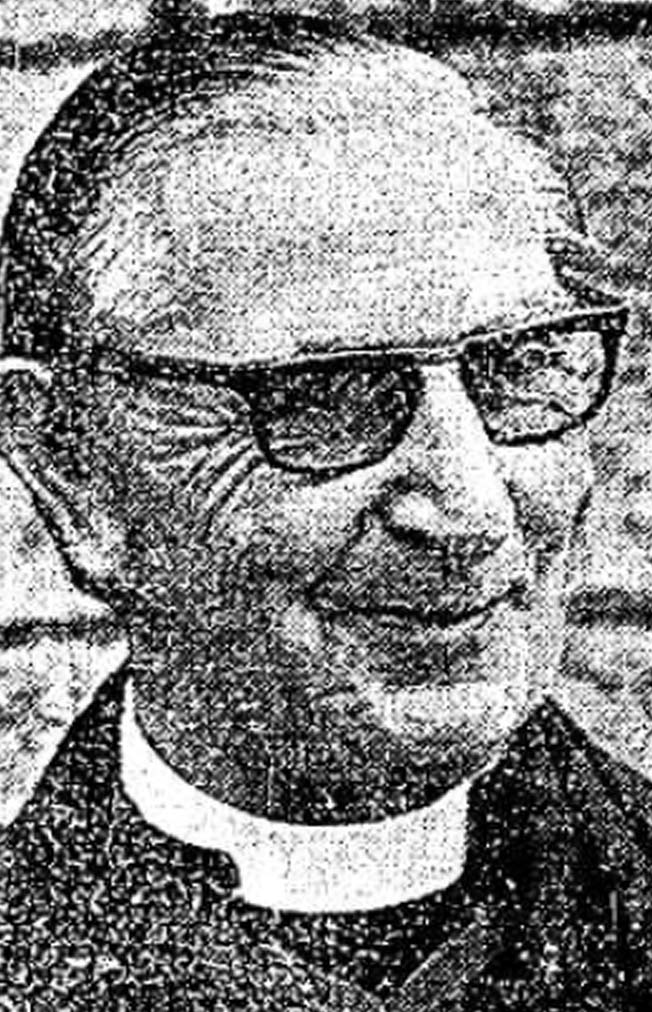
John O’Regan, General Manager of the Dicksgrove Group of Creameries, subsequently resided in the Glebe House.12
The lands were later utilised by the Dairy Disposal Company (DDC) and from 1951 the company operated the Castleisland cattle breeding, or AI (artificial insemination) Station, there.13
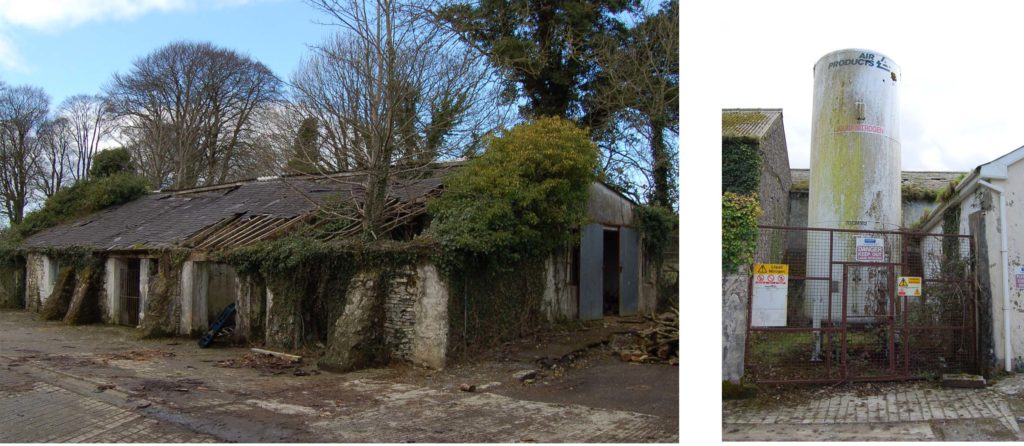
John O’Regan died at the Glebe House on 13 November 1976 and over the following three decades, the old rectory was an office of the Kerry Co-Op (later the Kerry Group) which had, in about 1973, taken over the DDC.
The Kerry Group vacated the offices in 2007 and the old rectory stood empty. The door closed on its rich and varied history in September the following year when it was destroyed by fire.
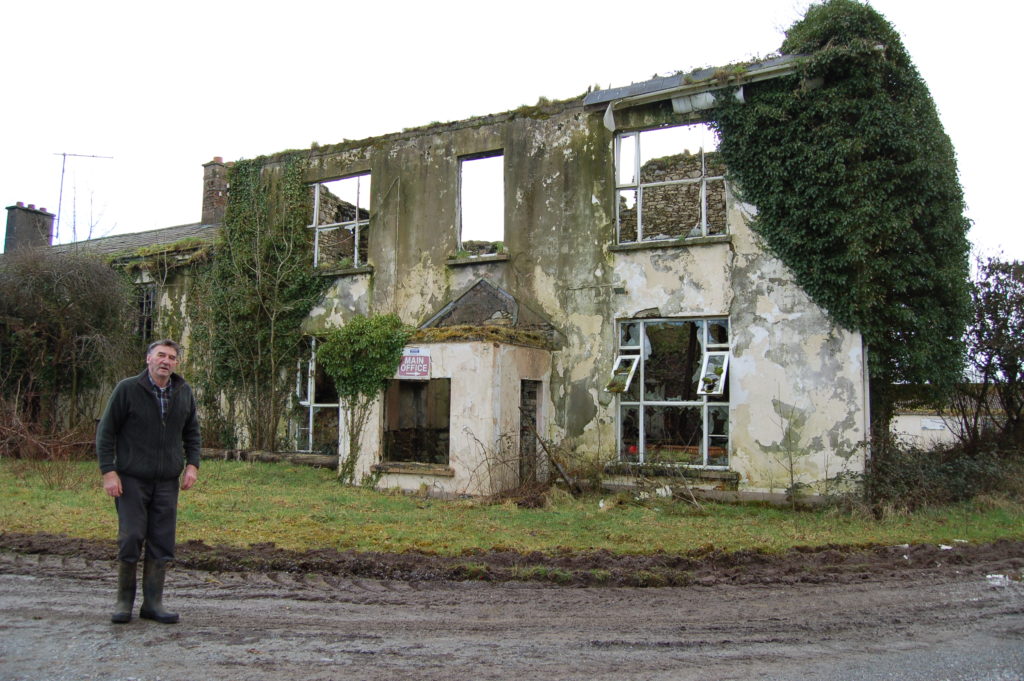
It now stands in ruin.14
1 See page, ‘Visitors’ Comments on Castleisland’. 2 William Crosbie (1771-1832) Son of Hon Maurice Crosbie (Dean of Limerick and rector of Duagh). Succeeded his cousin John Crosbie (Earl of Glandore) in 1815 to 4th Lord Brandon. Married Elizabeth La Touche; this marriage broke down and in 1829, Lord Brandon took proceedings against Lord Melbourne (Hon W Lamb) for ‘criminal conversation’ with his wife. Shortly afterwards Lord Brandon removed to the continent for the benefit of his health, where he died at Nice on 4 May 1832. He left no male issue and the barony of Brandon became extinct. His daughter married Henry Galgacus Redhead Yorke, MP, son of the political writer Henry Redhead Yorke. Further reference, The Legend of Lord Brandon (2014) at www.lulu.com. 3 Lord Brandon was accused of describing David Fitzgerald of Grouse-hall as ‘two thousand pounds worse than a beggar’. A report of the hearing suggested Lord Brandon was resident in the Glebe House in 1820. See page, ‘Fitzgerald of Adrivale’ for more on the Fitzgerald family of Adraval. 4 James Patrick O'Gorman Mahon (1800-1891) JP DL MP, son of Phadraic Mor (Patrick Mahon) of Newpark, Ennis, Co Clare. Declan Barron of Newpark House, Ennis, Co Clare has conducted considerable research on the Mahon family, see https://www.newparkhouse.com/. 5 Tralee Chronicle, 5 December 1873. See also IE MOD/13 ‘The Diocesan School for Ardfert was kept at Castleisland in a house formerly a Charter schoolhouse. The master was Rev J Mahon’. 6 See ‘Gun of Rattoo’ in Burke’s records. 7 See notes about Anthony and William on page, ‘Visitors’ Comments on Castleisland’. 8 Divanes Calendar (1999). 9 During Rev Maunsell’s occupation of the Glebe House, the Lord Bishop of Limerick was a guest during his visit in 1840 to consecrate the church at Aghadoe which had opened for service in 1839. Curates who served Castleisland parish included Reverends Weir, Drew, Beatty, R Fitzgerald Swindell, Daniel Martin Orr, Richard Harold. See The Church of Ireland in Co Kerry a record of church and clergy (2011) for clerical reference. In December 1915, during the ministry of Rev George Browne (1914-1923), Kilbannavane Glebe lands containing 30 acres was offered for sale. 10 Rev Moriarty retired in 1901 and died in Dublin in 1904. He was buried in the New Cemetery Killarney. He married Emma Sophia Brown and had issue one son and five daughters, viz, Henry Moriarty, who in 1913 was in the USA (Waterbury Cross); Isabel Margaret Moriarty who married on 28 April 1886 at Castleisland Stephen Thomas Banning 1st battalion Royal Munster Fusiliers, only son of John Stephen Banning of Great Tower-street, London and Ogbourne St George, Wilts; Emie Cecilia Moriarty who married in Castleisland on 17 April 1894 Irish born Thomas Herbert Corkery (1861-1936) of Apsley House, Apsley Road, Mutley, Plymouth, second son of Captain Martin Corkery, ‘the man who saved Bombay’. Thomas Herbert Corkery served in Bermuda, India and Burma and was decorated with the MC. Emie Cecilia Corkery died in 1915. The couple had two sons, Eric Denis Corkery and Desmond Henry Corkery. Major Eric Denis Corkery of Ward Hill, Rowledge, Farnham married in 1923 Dorothy Lindsay, daughter of Sir Henry James Forde (widow of Major Claud Frederic Thomas Lindsay, Killed in Action 31 March 1918, buried at Hailles Communcal Cemetery). Major Corkery was Killed in Action in the Second World War (4 December 1942). He is remembered at Bone War Cemetery, Annaba (grave ref VB8). He served in the Devonshire Regiment; see Corkery family papers (5277 M) 1884-1943 at the Devon Archives and Local Studies Service which includes a studio portrait of Desmond Henry Corkery who in 1940 was Lieutenant in the Royal Fusiliers, Welch Regiment; Sybil Moriarty who married Rev Robert Philip Rowan, rector of Killarney; Ethel Clare Moriarty who married Henry John Moore, District Inspector, Royal Irish Constabulary, stationed at Abbeyfeale until 1901 when he was transferred to Skibbereen until 1906, thereafter Tipperary town (1906-11), Sligo from 1911-18, Ennis from 1918. It was reported that Inspector Moore had joined the Ancient Order of Benedicts on his marriage to Miss Moriarty. The couple had a daughter, Dorothy Sybil and a son (un-christened at time of census 1911). 11 Rev Packham, native of Midleton, Co Cork, served in Clogher Diocese before transferring to Castleisland as curate-in-charge in 1941. He was subsequently incumbent of Listowel Union until 1952 when he served in the parish of Ballydehob, Co Cork until 1960. He was incumbent of St Luke’s Church, Douglas and Frankfield, and in 1968, appointed Canon. He married Sylvia and had three children, Neville Henry, John Winston and Elizabeth Regina. Canon Packham died on 31 December 1975 aged 63. Canon Packham Hall in Douglas is named after him. O’Donohoe Collection records (IE MOD/15/15.1/15.1.31) indicate that Rev Francis Joseph Roycroft was the last rector of Castleisland. Rev Roycroft (1911-1969) was rector of Ballymacelligott 1945-1969. In 1947, Castleisland parish was united to Ballymacelligott and Ballyseedy. See Church of Ireland in Co Kerry a record of church and clergy in the nineteenth century (2011). 12 In 1947, 69 acres of Glebe lands at Kilbannivane together with a dwelling house, out offices and extensive fruit gardens were offered for sale by John Kennelly. 13 The semi-state company, which bought out small creameries, purchased six groups in Kerry: Castleisland (Dicksgrove), Listowel, Rathmore, Castlemaine, Kenmare and Caherciveen. Further reference, Irish Agriculture Nationalised — The Dairy Disposal Company and the making of the modern Irish dairy industry (2014) by Dr Mícheál Ó Fathartaigh. 14 The station was closed down and the land sold to the O’Connell family.


